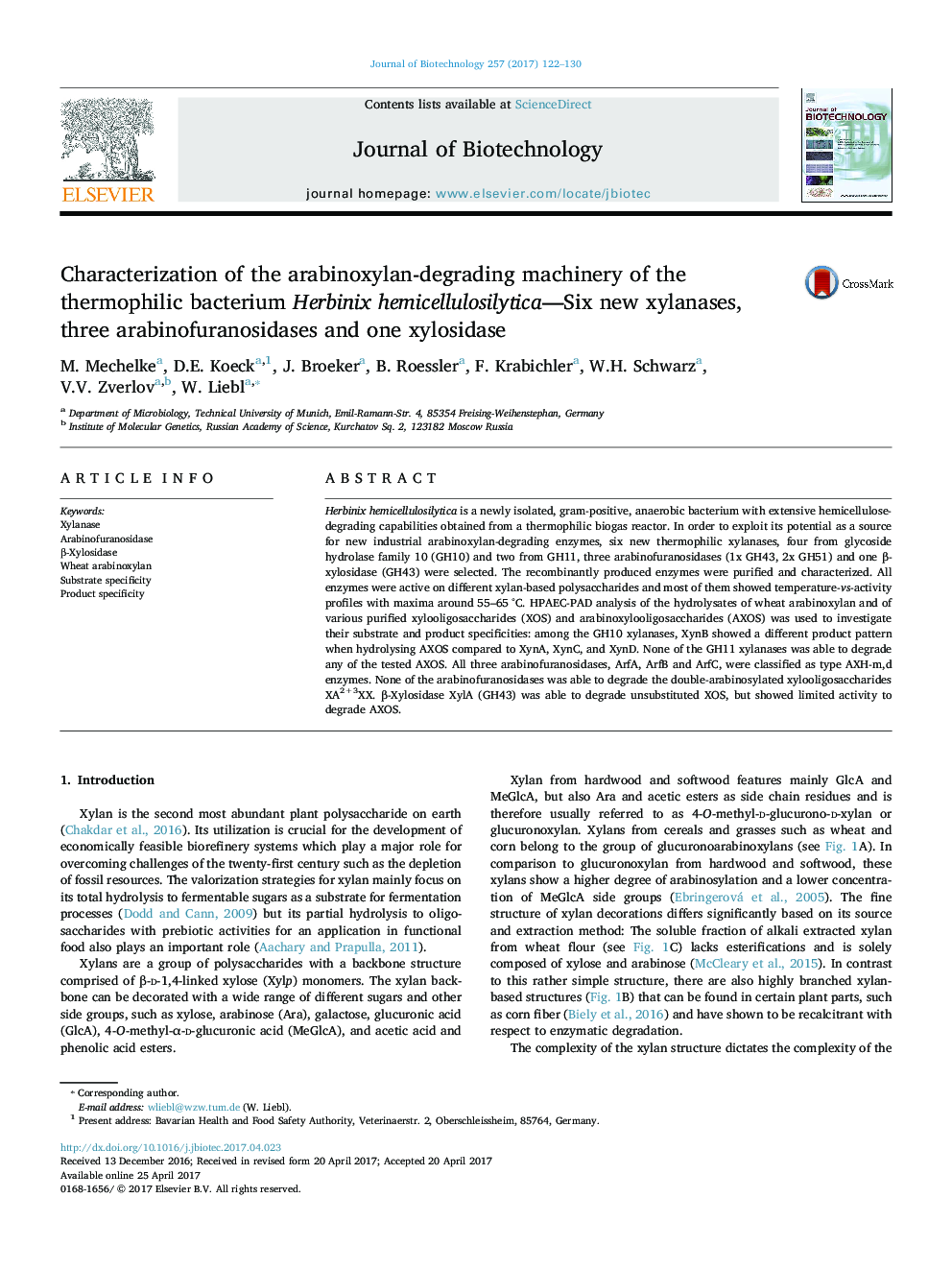| Article ID | Journal | Published Year | Pages | File Type |
|---|---|---|---|---|
| 6451904 | Journal of Biotechnology | 2017 | 9 Pages |
â¢Recombinant expression of new xylanases, arabinofuranosidases and a xylosidase.â¢HPAEC-PAD based analysis of XOS and AXOS-derived products for all enzymes.â¢New insights into substrate and product specificities of GH10 xylanases.â¢Identification of recalcitrant degradation products during arabinoxylan degradation.
Herbinix hemicellulosilytica is a newly isolated, gram-positive, anaerobic bacterium with extensive hemicellulose-degrading capabilities obtained from a thermophilic biogas reactor. In order to exploit its potential as a source for new industrial arabinoxylan-degrading enzymes, six new thermophilic xylanases, four from glycoside hydrolase family 10 (GH10) and two from GH11, three arabinofuranosidases (1x GH43, 2x GH51) and one β-xylosidase (GH43) were selected. The recombinantly produced enzymes were purified and characterized. All enzymes were active on different xylan-based polysaccharides and most of them showed temperature-vs-activity profiles with maxima around 55-65 °C. HPAEC-PAD analysis of the hydrolysates of wheat arabinoxylan and of various purified xylooligosaccharides (XOS) and arabinoxylooligosaccharides (AXOS) was used to investigate their substrate and product specificities: among the GH10 xylanases, XynB showed a different product pattern when hydrolysing AXOS compared to XynA, XynC, and XynD. None of the GH11 xylanases was able to degrade any of the tested AXOS. All three arabinofuranosidases, ArfA, ArfB and ArfC, were classified as type AXH-m,d enzymes. None of the arabinofuranosidases was able to degrade the double-arabinosylated xylooligosaccharides XA2+3XX. β-Xylosidase XylA (GH43) was able to degrade unsubstituted XOS, but showed limited activity to degrade AXOS.
